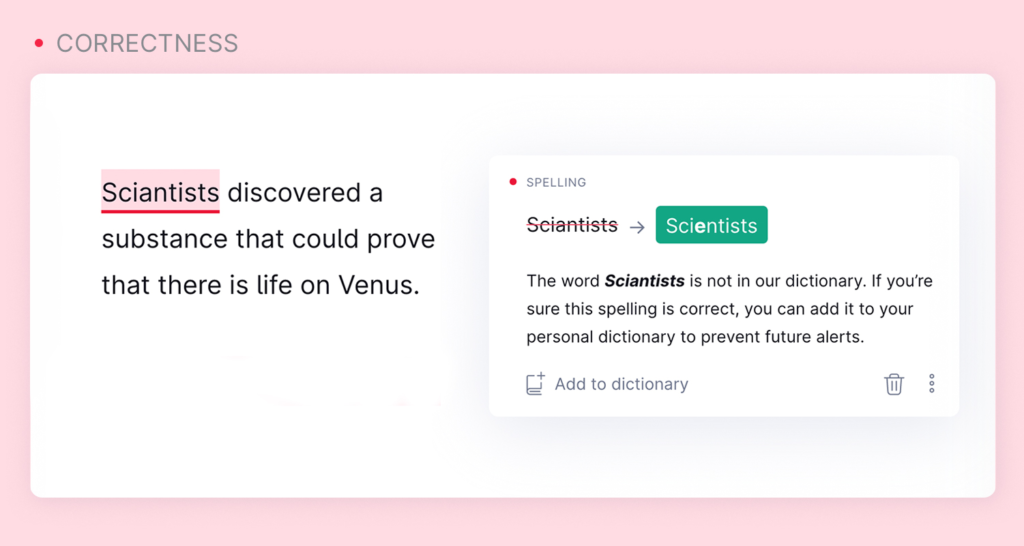There are many common and avoidable mistakes in technical writing. In my experience as a technical writer, I have seen these mistakes repeated often.
Even “seasoned” technical writers sometimes make and repeat avoidable mistakes, reducing the quality and credibility of their work.
There is a famous saying: “One never gets a second chance to make a first impression.” In this article, I’ll explain some mistakes you should look out for in your next documentation, how to avoid them, and how to make a solid first-time impression.
Let’s get to it.
Grammatical errors
Typically, this should go without saying, but here we are. A grammatical error in a technical piece is more than an eyesore; it can mislead and convey incorrect technical information to the reader.

A misplaced comma, an unwarranted hyphen, or an unexplained abbreviation can communicate the wrong information. Writing error-free content demonstrates authority and professionalism. Any technical document with grammatical errors loses credibility and trust.
To avoid ambiguity and gain your readers’ trust, eliminate grammatical errors in your writing. Use a grammar checker like Grammarly or Hemingway App to proofread and edit your work.
Flooding the content with jargon
Jargon is often necessary in technical documents to communicate complex concepts. However, when you start flooding the content with jargon, it can frustrate and alienate readers unfamiliar with those terms.
A simple way to avoid this is to include a glossary or explain every jargon at first mention. Try to keep your content simple and inclusive to a broader audience.
Working without a structure or formatting guide
Good structuring and formatting presents information in a way that is easy to read and navigate. Poor structuring shows inconsistency and unprofessionalism, contributing to a poor reader experience.
Before you write any piece, create an outline with headings, subheadings, and bullet points. This way, the ideas are closely knitted and easy to follow. Proper structuring and formatting will improve readability and reader experience.
Writing without a specific audience in mind
Imagine you jump on a bus without any direction. That is what writing without an audience looks like—anything and everything goes.
Tailoring your content to suit a specific audience is necessary for effective communication and engagement.
Understand the specific audience in your niche and speak to them directly. Learn their challenges, interests, and pain points, and tailor your content to be the solution they are searching for.
Ignoring user feedback and search intent
If you are genuinely interested in providing valuable technical content, address all feedback to meet your audience’s needs. Prioritizing search intent is a great way to improve the search engine ranking and visibility of your content.
Understand the reason behind every search intent and provide the valuable information your audience needs.
Ignoring user feedback and search intent will never give you a competitive edge. So, make it a routine to review user feedback and analyze all the search queries related to your content.
Using the gendered pronouns
As a technical content writer, it’s more professional to use gender-neutral pronouns such as they, their, and them. Gender-neutral pronouns ensure your content is inclusive and relevant across all cultural contexts.
Instead of writing, “he needs to configure the software,” use gender-neutral language and say, “The user needs to configure the software.” This way, your content is more inclusive and applicable.
Writing long paragraphs
Short paragraphs make content skimmable, while lengthy paragraphs turn readers off.
Researchers have confirmed that readers retain information better when they are written in shorter paragraphs. Your audience is not reading your content because your paragraphs are too long, making them appear burdensome to the eye.

When you write in shorter paragraphs, you encourage scannability, readability, and information retention. Your paragraphs should be 3-4 sentences long. Don’t forget to keep your sentences short as well.
Flexing your vocabulary
I know many forms of writing require you to showcase your vocabulary prowess, but sadly, technical content writing is not one of them.
Flexing your vocabulary in technical documentation defeats the aim of the writing, which is to communicate information clearly and concisely.
Choosing to use unfamiliar words when you should be precise in the instructions and specifications is unfair to your readers. Readers are more likely to connect to your content when it is straightforward.
Avoid showing off your vocabulary and simplify things for readers unless your goal is to have them pull out the Oxford Dictionary every time they read your work.
Overlooking SEO and ASO
Prioritize SEO (Search Engine Optimization) and ASO (App Store Optimization).
SEO practices will significantly improve the visibility of your content and ensure that it ranks well in search engine results pages (SERPs). Some simple SEO practices to adopt include keyword research, meta descriptions, headings, and internal linking.
ASO practices ensure that apps rank well in the app store search results. Prioritize keyword optimization in app titles and metadata.
Conduct keyword research to identify the key phrases and terms your target audience is searching for and integrate them into your content.
Attaching the wrong accompanying visuals
Attaching relevant visuals to your technical documentation can help buttress a point and enhance comprehension. However, using the wrong visuals will mislead your readers.
Visuals will only appeal to your audience when they are relevant and meaningful to the content. Also, ensure proper credit attribution or permission from the copyright holder to avoid legal issues.
Get rid of technical writing mistakes
Most of the time, when people hear “technical writing,” they think it is “complicated and boring.” Don’t validate that notion. Be wary of common technical writing mistakes and errors.
Technical content can be simple and engaging, just like this one. Keep the big words in the Thesaurus where they belong, and talk to your readers in a familiar language and tone.
At RoninPoint, we have a team of qualified and seasoned writers. Let us handle your technical writing while you enjoy the flow.
Who wrote this?
Okoye Chisom is a results-driven product manager with expertise in leveraging user insights, data analytics, and market research to deliver innovative, impactful products. She also specializes in SEO content writing and storytelling, crafting compelling narratives that engage and inform.
On a good day, you’ll find her exploring her passion for content creation and teaching. Feel free to connect with her on LinkedIn.
- Chisom Okoyehttps://roninpoint.com/author/chisomokoye/
- Chisom Okoyehttps://roninpoint.com/author/chisomokoye/February 28, 2025
- Chisom Okoyehttps://roninpoint.com/author/chisomokoye/November 4, 2024
- Chisom Okoyehttps://roninpoint.com/author/chisomokoye/October 28, 2024









